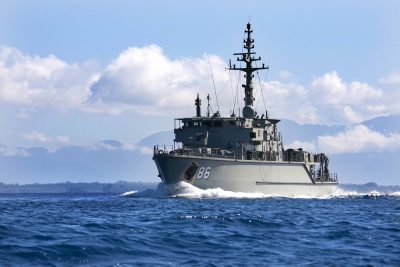Australia’s Naval Base in Papua New Guinea: Power Play in the South Pacific against China

Australia’s plans to return to the Lombrum Naval Base on Manus that it previously occupied in Papua New Guinea prior to the island state’s independence is a power play for leadership in the South Pacific on behalf of the Quad’s desire to “contain” China in this strategic space.
The news just broke that Australia is planning to return to the Lombrum Naval Base in Papua New Guinea’s island of Manus, which it used to occupy before the country’s independence in 1975. This is significant for many reasons, not least of which is that Australia used to run a so-called “offshore immigration camp” here until it was closed last year after reports about the scandalous humanitarian state of its detainees caused global indignation. Another driving factor is Australia’s interest in competing with and ultimately curtailing Chinese influence in the country that Canberra regards as falling within its “sphere of influence”, which dovetails with its fellow Quad allies’ desire to “contain” China in the broader South Pacific region.
The general trend is that Australia is engineering fake news scandals about China’s unproven military plans in the region in order to “justify” the expansion of its influence in the South Pacific through military means, with the US being more than happy to support its “Lead From Behind” partner and even speculatively order it to undertake these actions in the first place because of their shared interests in “containing” China. For its part, China seeks to sway the South Pacific states away from the West by wooing them with grants, loans, and investments doled out as part of its One Belt One Road (OBOR) global vision of New Silk Road connectivity, which in the regional context carries with it the significance of possibly encouraging the defection of six of the last states to recognize Taiwan and strategically securing the Sea Lines Of Communication (SLOC) between the People’s Republic and South America. This makes China’s economic policies in the region a means for achieving symbolic but also substantial ends.
The strategic importance of the Australian Navy’s return to Manus is that it could expectedly herald an American presence as well, which could altogether allow the US to control the sea space between that island and Guam in essentially “cutting off” China from the rest of the South Pacific in the event of any crisis between the two Great Powers. Although China’s presence in the region is strictly economic, there’s a fear that Beijing could clandestinely gather intelligence on some of the Quad’s naval vessels traveling between the US & Australia and Australia & Japan given these islands’ central location along their SLOC, which is the real reason why Washington wants to “contain” China in this strategic space. Australia is its ally of preference in doing so because of its historical legacy of “leadership” in the region, and Papua New Guinea is also the main point of attention because of its location, natural resource wealth, and rapidly expanding Chinese influence.
The island nation is also the largest and most populated one in the South Pacific region, so co-opting it is thought to be a means through which the other countries in the area could also fall in line. Likewise, the same logic can applied for explaining one of the reasons why China is so interested in Papua New Guinea, too. Considering that Fiji is the second-largest country in this space, it makes sense why the US focused its regional efforts into “convincing” it to symbolically sign on to the anti-Daesh coalition, as was explained in the author’s aforementioned piece at the beginning of this analysis. Taken together, the Quad’s concentration on Fiji and now Papua New Guinea is nothing more than a power play designed to “contain” China in the South Pacific, while China’s Silk Road engagement efforts with these two countries and their smaller peers are designed to preemptively break through this “containment” network, strategically secure its SLOC to South America, and monitor the Quad.
*
As a background into this new theater of the New Cold War, below are the author’s previous publications on this topic:
- “21st-Century Geopolitics Of Oceania: Micronesia, Polynesia, And Melanesia”
- “21st-Century Geopolitics Of Oceania: Australia”
- “Australia’s ‘Foreign Agent’ Law Is A Smokescreen For Duping The Population”
- “Australia Is Tightening Its Vise-Grip Of Control Over Vanuatu To ‘Contain’ China”
- “France Is Trying To Cast A ‘Hex’ On China’s South Pacific Plans”
- “Sure, Maybe China “Weaponizes Tourism”, But The US Weaponizes Its Own Economy
- “Fiji Isn’t Fighting Daesh, It’s Being Used By The US To Send A Signal To China”
Note to readers: please click the share buttons above. Forward this article to your email lists. Crosspost on your blog site, internet forums. etc.
This article was originally published on Eurasia Future.
Andrew Korybko is an American Moscow-based political analyst specializing in the relationship between the US strategy in Afro-Eurasia, China’s One Belt One Road global vision of New Silk Road connectivity, and Hybrid Warfare. He is a frequent contributor to Global Research.
Featured image is from Royal Australian Navy.

